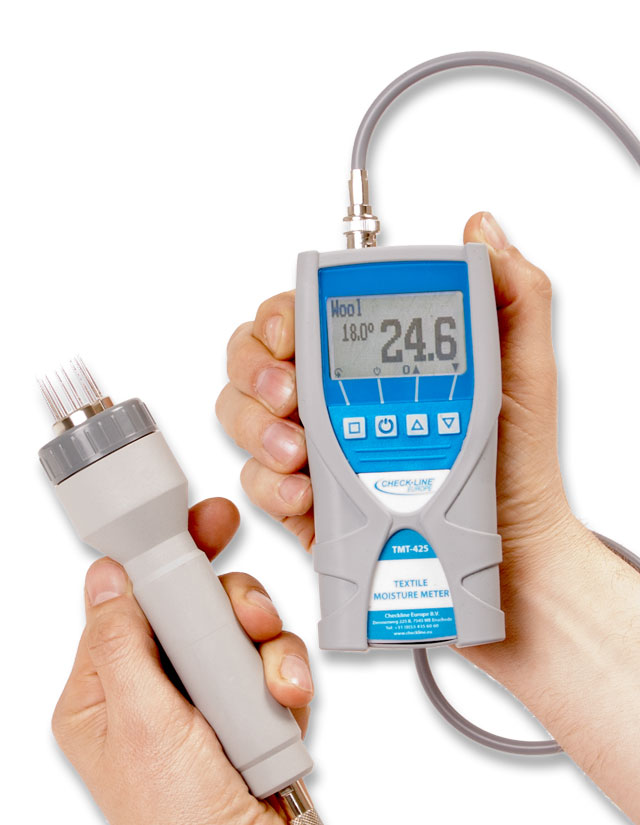Exactly how to Use a Moisture Meter to Identify Surprise Water Damage in Your Property
Exactly how to Use a Moisture Meter to Identify Surprise Water Damage in Your Property
Blog Article
The Ultimate Overview to Moisture Meters: A Comprehensive Introduction and Just How They Can Save You Cash
In the world of building upkeep, building and construction, and various sectors, the importance of properly determining dampness levels can not be overstated. Wetness meters offer as crucial tools in identifying and keeping an eye on moisture web content in materials, helping in protecting against expensive damages and making certain the top quality of products. Recognizing the nuances of different types of wetness meters, their applications, and the possible cost-saving advantages they provide can be a game-changer for professionals and companies alike. Finding how these tools can not only streamline procedures but also add to monetary savings is a trip worth embarking on.
Types of Moisture Meters
Various kinds of wetness meters are readily available for different applications in numerous industries. One typical type is the pin-type dampness meter, which determines the electric resistance between two pins placed into a product. This type appropriates for timber, drywall, and other building materials. Pinless wetness meters, on the other hand, usage electro-magnetic sensor plates to scan a larger area without creating damage to the material's surface area. These meters are excellent for quickly evaluating wetness degrees in large areas such as walls and floorings.
In addition, there are also specialized moisture meters created for certain materials like soil, hay, or grain. These meters supply precise dampness analyses customized to the unique residential or commercial properties of the product being checked. Infrared moisture meters gauge the thermal residential properties of a material to determine its dampness material non-invasively, making them beneficial for applications where pin or pinless meters might not be appropriate. Recognizing the various sorts of dampness meters available can aid markets pick one of the most proper device for their details moisture dimension requirements.

Advantages of Using Moisture Meters

In addition, using dampness meters can lead to enhanced energy efficiency. In agricultural settings, dampness meters play a crucial duty in enhancing plant yields by allowing farmers to keep an eye on dirt moisture degrees and make notified irrigation choices.
Just How to Choose the Right Moisture Meter
Picking the proper moisture meter includes considering key elements such as material compatibility, measurement array, and calibration precision. When choosing a moisture meter, it's necessary to make sure that the meter is ideal for the certain product you will be screening. Different materials have varying electric residential or commercial properties that can impact dampness readings, so selecting a meter developed for your product is vital for accurate outcomes. Furthermore, consider the dimension variety of the dampness meter. Guarantee that the meter can detect wetness degrees within the variety required for your applications. Calibration precision is another vital factor to remember (Moisture Meter). Go with a moisture meter with trusted calibration to make certain consistent and specific analyses. Some meters may need routine calibration modifications, so understanding the calibration process is very important. By very carefully reviewing these variables, you can choose a wetness meter that fulfills your demands and provides precise click reference dampness dimensions for your jobs.
Correct Methods for Moisture Meter Usage
To ensure exact wetness readings and maximize the effectiveness of a dampness meter, using proper techniques is vital. When making use of a pin-type wetness meter, place the pins or probes into the product being checked till they make complete call. By following these proper strategies, customers can depend on their moisture meter to offer credible dampness levels, helping in avoiding expensive damages or guaranteeing quality in various applications.

Cost Financial Savings Via Moisture Meter Applications
Just how can the strategic application of wetness meters lead to considerable cost savings across various markets? In the farming industry, dampness meters help in establishing the optimal time for collecting plants, avoiding over-drying or excess moisture that can affect the last product's quality.

Additionally, in the food handling market, dampness meters are essential for visit site monitoring product top quality and making certain compliance with safety guidelines. By properly determining wetness material in foodstuff, makers can avoid spoilage, maintain quality, and decrease waste, leading to significant price financial savings. Overall, the calculated application of moisture meters is a useful investment that can result in significant cost decreases and enhanced efficiency throughout various industries.
Conclusion
In conclusion, wetness meters are useful tools for identifying and gauging wetness degrees in different products. By using the right dampness meter and following correct methods, users can successfully prevent pricey problems caused by excess dampness.
Moisture meters offer as crucial tools in spotting and checking moisture web content in products, assisting in avoiding expensive damages and guaranteeing the high quality of items. Infrared dampness meters measure the thermal buildings of a product to establish its wetness web content non-invasively, making them valuable for applications where pin or pinless meters may not be suitable.Wetness meters supply very useful advantages visit in accurately monitoring and evaluating moisture levels in diverse materials and settings. In agricultural settings, dampness meters play a critical function in maximizing crop returns by allowing farmers to keep an eye on dirt dampness degrees and make educated watering decisions.In verdict, dampness meters are useful devices for determining and identifying wetness levels in different materials.
Report this page